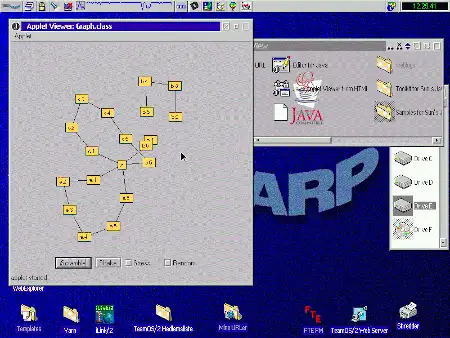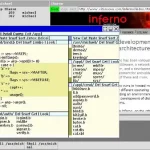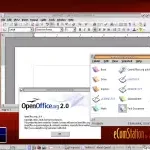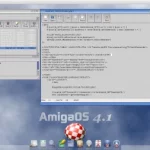Last Updated on: 25th August 2023, 12:36 pm
Web site: www-01.ibm.com/software/os/warp-withdrawal/ (not active)
Origin: USA
Category: Desktop
Desktop environment: Workplace Shell (WPS)
Architecture: x86, PowerPC
Based on: Independent
Wikipedia: OS/2
Media: Install
The last version | Released: 4.52 | December 2001
OS/2 – a proprietary operating system, started in 1985 by IBM and Microsoft with a name of “CP/DOS”. Originally, OS/2 was expected to gradually replace DOS and Windows.
In the summer of 1990, Microsoft announced Windows 3.0 and it became a monster hit. The relationship between IBM and Microsoft was already strained, and further development of OS/2 was left entirely to IBM. Microsoft went on to develop NT, enhance Windows, and produce Windows 95.
Eventually, IBM figured out what was wrong and fixed it. OS/2 2.0 and 2.1 used 386 memory management, ran almost all DOS programs, and ran most Windows applications as well. IBM now supports clone computers, and has largely abandoned its PS/2 Microchannel family for the same PCI, ISA, IDE, SVGA architecture everyone else uses.
In the fall of 1994, IBM released Warp (OS/2 3.0) and made its last big marketing push for OS/2. IBM had a product out ten months before Windows 95 would be released. OS/2 was technically a better system than Windows 95 would be, with real program integrity, priorities, and server-quality I/O. None of this was discussed in any of the IBM ads or announcements. Instead, IBM concentrated on a “one button connection to the Internet” through IBM’s expensive public network. It would be six months before IBM released a version of Warp for corporate and campus use (with LAN support) and IBM never succeeded in capturing market share for Warp among home computer users.
Application programs could not interfere with themselves or with each other. The system could natively use larger amounts of memory. Yet the system maintained the command language and file structure of DOS.
Each OS/2 program runs in its own address space. It is common to talk about the old 16-bit programs and the newer 32-bit programs, but OS/2 does not separate the two or treat them differently. More accurately, OS/2 assumes that each of its applications may have a mixture of 16-bit and 32-bit pieces. OS/2 is itself a hybrid system with mixtures of both types of code.
OS/2 recognizes when a program has been constructed using the old 16-bit tools (producing variable sized segments) or with the new 32-bit tools (providing 4K pages). The different EXE file structure changes the way that the program is loaded into memory. Once they start running, however, all modules get the same services and all are assumed to have both 16 and 32-bit components.
Native OS/2 programs open files, request storage, or load programs by calling standard system routines. These routines are packaged in the same sort of Dynamic Link Libraries (DLLs) that are used in Windows. There are 16-bit and 32-bit libraries with versions of all the standard system services, and a program can choose which to call.
The Workplace Shell (WPS) was introduced in OS/2 2.0. WPS is an object-oriented shell allowing the user to perform traditional computing tasks such as accessing files, printers, launching legacy programs, and advanced object oriented tasks using built-in and third-party application objects that extended the shell in an integrated fashion not available on any other mainstream operating system.
The last version of OS/2 4.52 was released in 2001.
The project was re-branded to ArcaOS and is under development by Arca Noae.






ahhh yes I loved this at the time, it allowed me to run a lot of apps and windows at the same time and was rock solid.
at home I ran a firewall / communications app named InJoy and I recall seeing once an uptime of over a year. the box basically just sat in a closet connected to an ISDN modem and happily chugged away day after day.